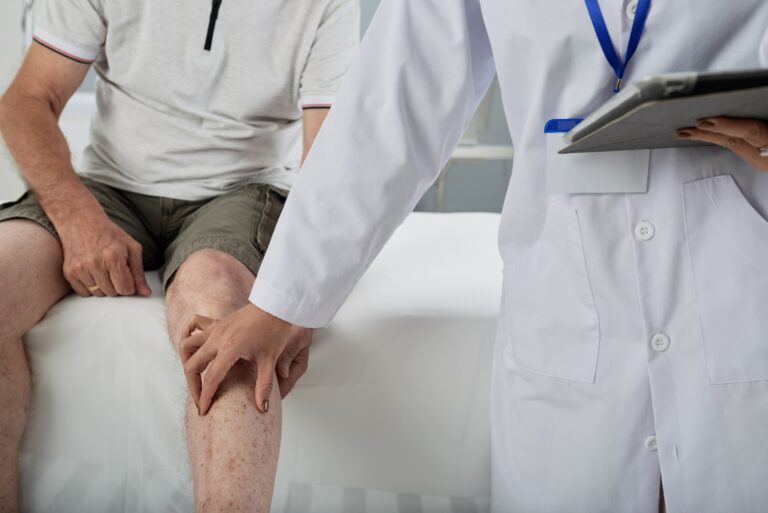Osteoarthritis is the most common type of arthritis, affecting millions of people worldwide. But what is osteoarthritis exactly? It’s a degenerative joint disease where the protective cartilage that cushions your bones wears down over time. This gradual breakdown causes pain, stiffness, and reduced mobility—especially in the knees, hips, hands, and spine.
Understanding osteoarthritis is essential for early detection and effective management. In this article, we’ll cover the key causes, symptoms, and risk factors to help you stay informed and proactive about your joint health.
What Is Osteoarthritis?
A Simple Explanation of Osteoarthritis
Osteoarthritis (OA) is a chronic condition that results from wear and tear of the joint cartilage. This cartilage acts as a buffer between bones. When it deteriorates, bones begin to rub against each other, leading to discomfort and inflammation.
How Osteoarthritis Differs From Other Types of Arthritis
Unlike rheumatoid arthritis, which is an autoimmune disease, OA is a mechanical condition. It typically affects one or a few joints and progresses slowly. Understanding this distinction can guide proper treatment.
Related: Understanding the Difference Between Osteoarthritis and Rheumatoid Arthritis
Common Osteoarthritis Symptoms
Most Frequently Affected Joints
Osteoarthritis can affect any joint, but it’s most common in the:
- Knees
- Hips
- Spine
- Hands
Progressive Nature of Symptoms
The condition often starts subtly. You may notice:
- Joint stiffness, especially in the morning
- Mild tenderness during or after movement
- Limited range of motion
- Grating sensation when using the joint
Early Signs of Osteoarthritis
Early symptoms may be dismissed as aging pains. However, recognizing them is key:
- Discomfort after periods of inactivity
- Slight swelling around joints
- Clicking or popping sounds during movement
What Causes Osteoarthritis?
Aging and Cartilage Wear
Age is the most significant factor. Over time, the joints naturally undergo wear and tear. However, OA is not inevitable with aging alone.
Genetic and Lifestyle Factors
- Obesity: Extra weight puts more pressure on weight-bearing joints like the knees and hips.
- Repetitive Stress: Jobs or activities that involve repetitive motion can increase the risk.
- Joint Injuries: Previous fractures or ligament tears can lead to OA later in life.
External Source: Mayo Clinic – Osteoarthritis Causes
Who Is at Risk for Osteoarthritis?
Top Risk Groups
- Individuals over 50
- Athletes with joint overuse
- People with a family history of OA
- Workers in physically demanding jobs
Modifiable vs. Non-Modifiable Risk Factors
- Modifiable: Obesity, inactivity, joint injuries
- Non-Modifiable: Age, genetics, gender (women are more prone to OA)
Related: Lifestyle Changes to Prevent Joint Pain
When Should You See a Specialist?
Red Flags That Need Medical Evaluation
- Persistent joint pain or stiffness
- Visible joint swelling or deformity
- Loss of mobility affecting daily tasks
How Early Intervention Helps
The sooner OA is diagnosed, the easier it is to slow its progression. Non-surgical treatments like physical therapy, injections, or lifestyle changes can preserve joint function and improve quality of life.
Book a consultation with an ASAP pain specialist today.
Takeaway: Know the Early Signs, Act Early
Osteoarthritis may be common, but it doesn’t have to control your life. By recognizing the early signs and understanding what causes it, you can take proactive steps to protect your joints.
Early intervention, lifestyle modifications, and specialist care can make a significant difference.
Explore Non-Surgical Options for Osteoarthritis Relief
FAQ About Osteoarthritis
What are the first signs of osteoarthritis? Stiffness, joint discomfort, and reduced flexibility—especially after inactivity.
Can you prevent osteoarthritis? You can’t always prevent it, but maintaining a healthy weight, staying active, and avoiding joint injuries can reduce your risk.
Which joints are most commonly affected? Knees, hips, spine, and fingers.
Does osteoarthritis always get worse? It tends to progress, but early management can significantly slow down the deterioration.


